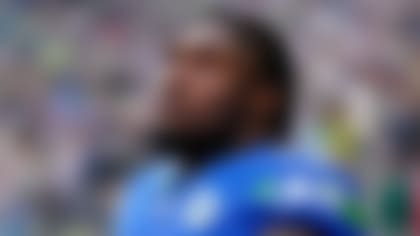Brett Favre announced Wednesday that he is retiring from the NFL after 18 seasons -- maybe for good this time. That got me thinking about where the New York Jets, who had Favre as their quarterback for only one season, will go from here.
With that in mind, here are a few thoughts on how things could shake out in the next two months.
In the short term, Favre's retirement helps the Jets. Favre was scheduled to be paid $13 million in 2009, but that money will come off the books once his retirement papers reach the league office. That will allow the Jets, who were set to be $11 million over the cap this offseason, to have some operating capital once free agency starts.
However, the question of who will play quarterback for the Jets in 2009 and beyond still must be answered. Before Favre was traded to New York, the Jets were planning to make this Kellen Clemens' team. The three-year pro is back in the mix now, but the Jets can't afford to just hand him the job. They must force him to compete for it.
So how can the Jets do that? They could look at drafting a young quarterback, and with the 17th pick in the first round, USC's Mark Sanchez might be available. Sanchez has some issues -- he left school early, had less than 20 career starts in college and is just 6-foot-3. Still, the Jets might have to consider Sanchez should he fall that far in the draft.
Then there's always free agency. Jeff Garcia, who likely won't return to the Tampa Bay Buccaneers, is a short-term possibility, but remember that new Jets head coach Rex Ryan came from a Baltimore Ravens team that reached the AFC Championship Game with a strong defense and a young quarterback, so he might try to go that route in New York. If the Jets look at free agents, they likely will focus on younger, experienced quarterbacks such as Byron Leftwich or Kyle Boller. The problem is backup Luke McCown just signed a two-year, $7.5 million deal with the Buccaneers. Leftwich and Boller are former starters who probably believe they're better than McCown and will demand more money.
One more intriguing scenario involves a trade for Cleveland Browns quarterback Derek Anderson. New Browns coach Eric Mangini and Jets general manager Mike Tannenbaum still have a decent working relationship. New York now needs a quarterback, and you know Mangini would love to have some of his former Jets players with him as he tries to establish his new regime in Cleveland.
It gets better. Anderson was the scout-team quarterback against Rex Ryan's Ravens defense in 2005, so they also have a relationship. The good news for the Jets is that Anderson, who likely has lost the Browns' starting job to Brady Quinn, has two years remaining on his current contract, so New York wouldn't even have to negotiate with him. The Jets could do a straight player-for-player deal.
Draft thoughts
Much work and evaluation has yet to be done, but I'm already hearing GMs discuss the direction they're looking to go in the draft.
It should be another good year for offensive tackles because five could enter the draft with first-round grades. Virginia's Eugene Monroe, Alabama's Andre Smith, Baylor's Jason Smith, Mississippi's Michael Oher and Arizona's Eben Britton are the tackles to watch, and at least four will hear their name called in the first round.
Ranking the prospects
Thank goodness for the underclassmen at running back and wide receiver. The top five backs all are early entry players -- Georgia's Knowshon Moreno, Ohio State's Chris "Beanie" Wells, Pittsburgh's LeSean McCoy, Iowa's Shonn Greene and Connecticut's Donald Brown. Taking a young back and throwing him into the fire turned out to be a wise decision last year for teams such as the Tennessee Titans and Houston Texans, and it could work well again this year.
Six of the top wide receivers also are underclassmen, led by Texas Tech's Michael Crabtree, who could be one of the top three overall picks. He's a natural playmaker with excellent hands and body control, and he reminds me of Hall of Famer Michael Irvin. Missouri's Jeremy Maclin is a speed guy and a serious vertical threat. Others to watch include Florida's Percy Harvin, Maryland's Darrius Heyward-Bey, North Carolina's Hakeem Nicks and Rutgers' Kenny Britt.
The only quarterbacks anyone is talking about right now -- Sanchez and Georgia's Matthew Stafford -- also are underclassmen. The next quarterback in line is Kansas State's Josh Freeman, who's big, strong-armed and mobile. He's another early entry prospect who had his ups and downs in college.
On defense, I look for players who will switch to outside linebacker in a 3-4 defense in the NFL. Florida State's Everette Brown is a candidate, as is fellow collegiate defensive end Brian Orakpo of Texas. Tennessee's Robert Ayers already is moving up in some scouts' minds after he flashed some ability at the Senior Bowl.
Naturally, some guys who already play linebacker fit the ball -- just look at Wake Forest's Aaron Curry, USC's Brian Cushing and Northern Illinois' Larry English. But how will an NFL coach view a player such as Georgia Tech defensive end Michael Johnson? He looks a lot like Mathias Kiwanuka to me. It will be interesting to put these players in linebacker drills and see how they get into their drops and adjust to rushing the passer from a stand-up position.



